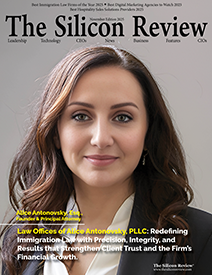>>
Industry>>
Healthcare>>
Silent Shifts in U.S. Healthca...Silent Shifts in U.S. Healthcare Signal Deeper Systemic Disruption
The Silicon Review
23 April, 2025
A convergence of regulatory cuts, AI integration, and payer-provider conflicts is reshaping the U.S. healthcare landscape—posing new operational risks for stakeholders.
A wave of policy changes, industry tensions, and technology integration is quietly redefining the structural foundation of U.S. healthcare, signaling what some analysts view as the early stages of systemic disruption. The FDA’s latest proposal to phase out synthetic food dyes—many of which have been linked to behavioral and allergic responses in children—underscores growing public health scrutiny. This shift toward cleaner ingredients marks not just a health directive but a signal to food and pharmaceutical manufacturers to recalibrate formulations in anticipation of stricter compliance mandates. Simultaneously, a proposed 33% budget cut to the Department of Health and Human Services (HHS) is stirring concern within public health circles. While framed as fiscal restraint, such a move could slow progress in regulatory oversight, Medicaid administration, and pandemic preparedness—three pillars that have been stress-tested in recent years.
Meanwhile, Texas is reporting a sharp rise in measles cases—an unsettling indicator that declining vaccination rates may be reversing decades of public health gains. This resurgence is placing renewed pressure on state healthcare systems and underscores a broader national vulnerability to vaccine-preventable diseases. Adding complexity, UnitedHealth Group has begun demanding loan repayments from physicians who were financially supported during claim-processing disruptions caused by last year’s cyber-attack on its subsidiary, Change Healthcare. While contractually legal, the move has triggered backlash from providers still grappling with delayed reimbursements and administrative backlogs.
Lastly, artificial intelligence is being cautiously introduced in clinical settings. Hospitals are piloting AI systems to assist in diagnostics, patient triage, and administrative workflow—yet questions remain about algorithmic transparency, liability, and ethical governance. Together, these developments signal a high-stakes recalibration of U.S. healthcare. For industry leaders, the message is clear: adapt quickly, invest in resilient systems, and anticipate cross-sectoral impacts—or risk falling behind as healthcare’s transformation accelerates.


_2025-11-17_06-38-14.webp)

 (1)_2025-10-21_13-35-14.webp)

_2025-10-02_10-21-48.webp)